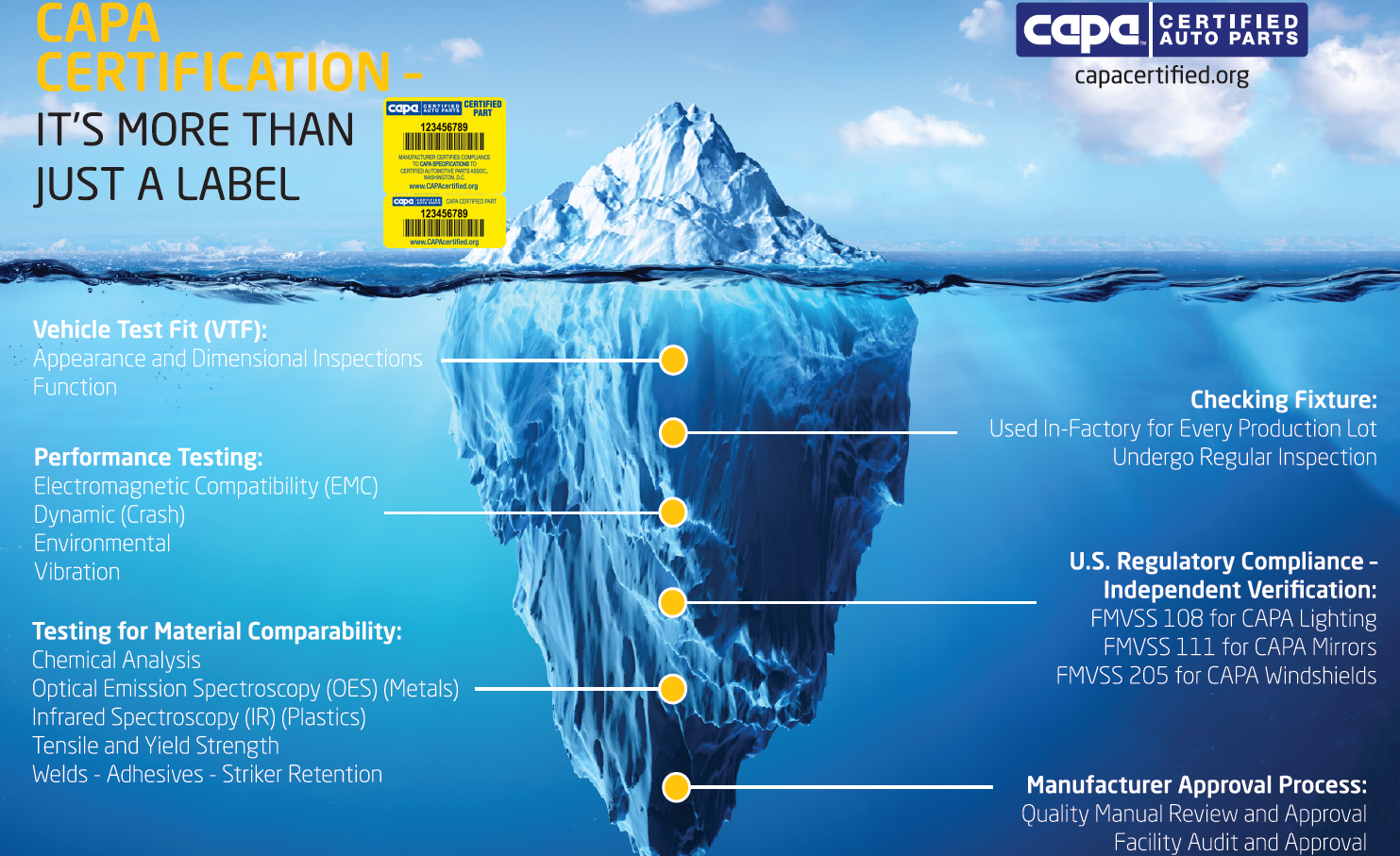Science Of Testing
In a sprawling testing complex in Michigan, not far from where vehicles roll off the nation’s assembly lines, people are engaged in product testing. It is, in fact, the advanced testing facility where compliance testing to CAPA Certification standards takes place.
Here, over 65 scientists, engineers and technicians put auto parts through a rigorous battery of tests to see if they have what it takes to be CAPA Certified. Utilizing some of today’s most advanced testing equipment and technologies including lasers, infrared spectrographic analysis, Differential Scanning Calorimetry Test for Plastic and Foam and Full part stress testing (crash testing), they put materials ranging from metal and plastic to lights and foam rubber through an array of procedures designed with a single goal in mind: to determine if they have the right stuff to meet CAPA’s comprehensive standards.
A key element in the CAPA program is full transparency. CAPA standards, test procedures, requirements, tolerances and compliance oversight is fully available to the public. We would have it no other way!
This represents a serious, long-term commitment. But it lies at the very heart of CAPA’s public service mission to protect consumers and the marketplace from inferior, failure-prone and possibly unsafe parts.
And it’s why the CAPA Quality Seal on a replacement part is immediately recognized as a sign of quality throughout the automotive industry.
For more information regarding CAPA’s Validator Intertek click here: www.Intertek.com

